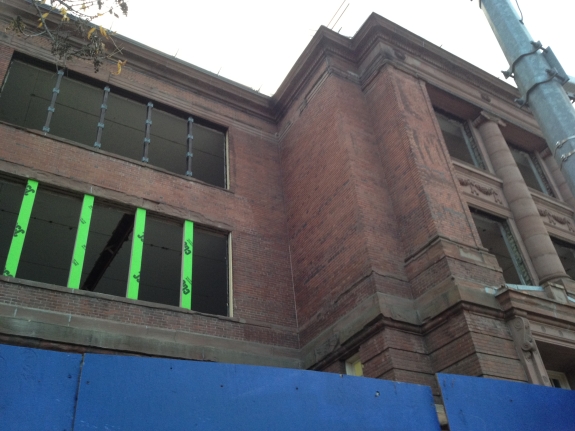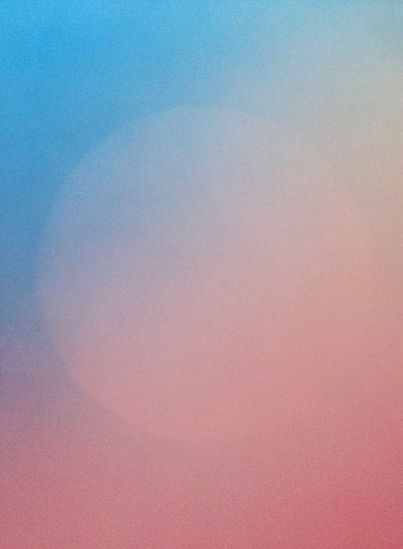We’re excited to be attending the New York Art Book Fair at MoMA PS1 this weekend, and in advance of our visit we’ve perused the program and are presenting our picks for your consideration. With so much to choose from, it’s difficult to decide between exhibitors and events, but for those with limited time, here’s what we’re prioritizing right now. Even if you won’t be in New York for the fair, check out some of these worthy artists and organizations online – they’re all doing great things in art books and beyond.
Selected Exhibitors:

6 Decades Books
Rare artists’ books and related material from 1960 to present
Afterall
Focusing on contemporary art and its relation to a wider artistic, theoretical and social context. Afterall journal includes in-depth analysis of artists’ work, along with essays on art history and critical theory.
Art Metropole
Internationally known artist-run centre that promotes conceptually based art and specializes in the contextualization and dissemination of artists’ books and multiples with an emphasis on innovative formats and emergent technologies.

Bad Day
Arts and culture quarterly that focuses on direct dialogue with today’s international artists, disregarding boundaries between film, video, visual art, music, high and low, and showcasing some of the commonalities we all share in our routines, perspectives and working practice.
Badlands Unlimited
Publisher and distributor of ebooks, paper books, and artist works in digital and print forms, founded in 2010 by artist Paul Chan. Premiering On Democracy by Saddam Hussein, co-published by Deste Foundation; Holiday by Paul Chan, published in an edition of one on a stone slab; a preview of upcoming Duchamp: The Afternoon Interviews by Calvin Tomkins; and artist editions by Petra Cortright, Josh Kline, Brenna Murphy, Travess Smalley, among others.
Boekie Woekie
Amsterdam’s artist-run shop for artists’ books for nearly 25 years.

Cinders
Artist-run gallery in Williamsburg since 2004 that self publishes art zines and has a section dedicated to handmade artist books.
Gagarin
Dedicated to the publication of written and unpublished texts by artists in their original language and writing, with translations in English.

J&L Books
Non-profit Atlanta/New York based publisher of artists’ books
K48
Artist’s magazine produced by Scott Hug

Little Brown Mushroom
Publisher of a number of artist books and zines, founded in 2008 by Alec Soth – “a DIY affair that blessedly doesn’t have to define itself or, for that matter, make money. LBM is our lemonade stand. It is mostly an excuse to enjoy the pleasures of making and sharing something cool.”
Ooga Booga
Los Angeles shop specializing in independently-produced artist books, music, design, artwork, and clothing. Host to events, launches, concerts, and projects since 2004, and creators of an online database of art book printers as a free resource to independent publishers, which you can access here
Open Space Baltimore
Artist-run gallery exhibiting the work of local and international artists and host to a wide variety of programming including lectures, screenings, and an annual Publications and Multiples Fair.

Perimeter Books
Small bookstore, art space and publisher based in Melbourne, Australia which stocks a curated selection of local and international small press, art, photography, architecture and design publications, and exhibits contemporary artists and designers with an interest in the printed form.
Printed Matter, Inc.
The world’s largest organization dedicated to artists’ publications, offering over 18,000 titles by 6,000 artists, including new and vintage books, periodicals, audio, multiples, and ephemera. Programming includes exhibitions, launches, special events, publishing, and, of course, the NY Art Book Fair.
Self Publish Be Happy
Celebrating, studying and promoting self-published photo books online and through publications, events, and workshops.

Siglio Press
Independent press in Los Angeles publishing books that live at the intersection of art and literature, including trade and limited editions, artist multiples, and small collections of ephemera.
The Thing
THE THING Quarterly is a periodical in the form of an object. Past contributors have included Miranda July, Jonathan Lethem, Starlee Kine, Matthew Higgs and Martin Creed. Current and Upcoming contributors include Dave Eggers, Mike Mills, David Shrigley, and Tauba Auerbach. The Thing will have a sneak peek of Mike Mills’ soon-to-be-released issue and a surprise commissioned project by visual artist Dave Muller that will be given away for free.
…
Selected Talks, Programs, Performances and more:
FRIDAY

4:00 pm, The Classroom
Karel Martens
The acclaimed graphic designer and Werkplaats Typografie founder in conversation with David Senior from the MoMA Library, and others
5:00 pm, The Classroom
Album Issue 7, presented by Eline Mugaas
The Oslo-based artist will be presenting a slideshow of collected images and giving out a free poster

5:30–7:00 pm, Performance Dome
Keynote: Paul Chan, “Publish to Perish”
Artist Paul Chan began publishing limited-edition books, e-books, and art works under imprint Badlands Unlimited in 2010. His questions about the viability of publishing will form the subject of this address, including: “Is publishing a form of addiction? What is a book? How is reading a book different than looking at art? Does light change the nature of what appears on paper and screen? How come I was served with a warrant for outstanding taxes? Why does running Badlands waste so much time and lose so much money? What does this have to do with pleasure?”
6:00 pm, The Classroom
Swill Children, Sk Sk
A re-performance of a skipping CD using acoustic and electronic instruments, composed and performed by Jesse Hlebo, Hisham Akira Baroocha, Kid Millions, and others

6:00–8:00 pm, SculptureCenter, 44-19 Purves Street
Book launch for A Disagreeable Object
A celebration of the NY Art Book Fair and release of a new publication accompanying the exhibition A Disagreeable Object, on view at SculptureCenter through November 26.
SATURDAY
12:00 pm, The Classroom
Why Don’t Artbooks Rate Review?
Panel discussion on the dearth of public commentary on photo– and art books as well as the scant attention paid to art writing, presented by Aperture

1:00 pm, The Classroom
On DIY Publishing and Exhibiting
Visual artist Gee Vaucher and Johan Kugelberg of Boo-Hooray presenting
3:00 pm, The Classroom
Diane Borsato, Terrestrial/Celestial
An exchange of terrestrial knowledge for celestial knowledge between amateur mycologists and astronomers
6:00–7:30 pm, Performance Dome
Keynote: Lucy Lippard, “Artists’ Books, Then and Now”
Art historian and critic Lucy Lippard will discuss the social context of artists’ books. Lippard is the author of several canonical texts on artists’ books and their role in the conceptual art movement, including, Six Years: The Dematerialization of the Art Object.

7:30 pm, The Classroom
Anouk Kruithof, Enclosed Content Chatting Away in the Colour Invisibility
Video screening of the Dutch artist’s colour-coded installation of 3,500 found books from Eastern Europe
SUNDAY
1:00 pm, Performance Dome
The Electric Information Age LP
DJ/composer Daniel Perlin, designer/musician Adam Michaels, and historian/performer Jeffrey Schnapp have formed the group The Masses (with live keyboards by Shannon Harvey) in order to remix their recent book on experimental paperbacks, The Electric Information Age Book. Can you dance to a book? The question was answered in the affirmative by the “first spoken arts record you can dance to”: the Marshall McLuhan, Quentin Fiore, and Jerome Agel record album The Medium is the Massage. The LP was released by Columbia Records in July 1967 on the heels of the mass market success of the first “electric information age” book The Medium is the Massage.

2:00 pm, The Classroom
Commerce by Artists, edited by Luis Jacob
Art Metropole’s latest publication documents a sweeping range of artists’ projects that seek to engage, rather than merely represent, the commercial world of which they are part. Conversation with contributors to the book moderated by Cheyanne Turions.

3:00 pm, The Classroom
Sometimes you can’t be there, so it’s good to know what happened. Sometimes you’re there and still want to know.
With a title like this, who can resist? Artist Jeanine Oleson speaks about her two new artist’s publications related to her performance works.
3:00 pm, Performance Dome
Conversation with Terry Smith
Author and art historian Terry Smith and Sofía Hernández Chong Cuy, Curator of Contemporary Art, Colección Patricia Phelps de Cisneros, will discuss Smith’s latest publication, Thinking Contemporary Curating.
5:00 pm, The Classroom
Traffic: Conceptual Art in Canada 1965–1980
Panel discussion on the development of conceptual art in Canada within an increasingly global context and international dissemination of conceptualism. Participants include: Vincent Bonia (author/independent curator, Montreal); Peter Dykhuis (director/curator, Dalhousie Art Gallery, Halifax); Barbara Fischer (executive director/chief curator, Justina M. Barnicke Gallery, Toronto); and Jayne Wark (professor of art history, Nova Scotia College of Art and Design University, Halifax). Moderated by Amish Morrell (edtior, C Magazine, Toronto).
ONGOING
The Courtyard
2-Up will be giving away free copies of its entire catalogue on a rotating hourly basis in the courtyard.
The Classroom
Dexter Sinister and Erik Wysocan present Watch Wysocan 0.5 Hz. Time is like that: both point and duration. This is how it can bend and warp. A week, a second, a season: all are equal and discrete, but none are the same. The present can be cut to any number of lengths, from a single vibration of a cesium atom to the display cycle of a digital watch.
…
This is only a partial listing of all that is on offer at the NY Art Book Fair, and we’ll be keeping our eyes open for events and exhibitors we have yet to discover. Keep your eye on our Twitter feed for updates and pics!
Visit the NY Art Book Fair website for a complete listing of exhibitions, talks, book signings, performances, and other programming.
Art+Artists, Design, Editions, Events, Publications, Storefronts
books, collecting, conceptual, design, events, NYC, performance, printmaking























































































